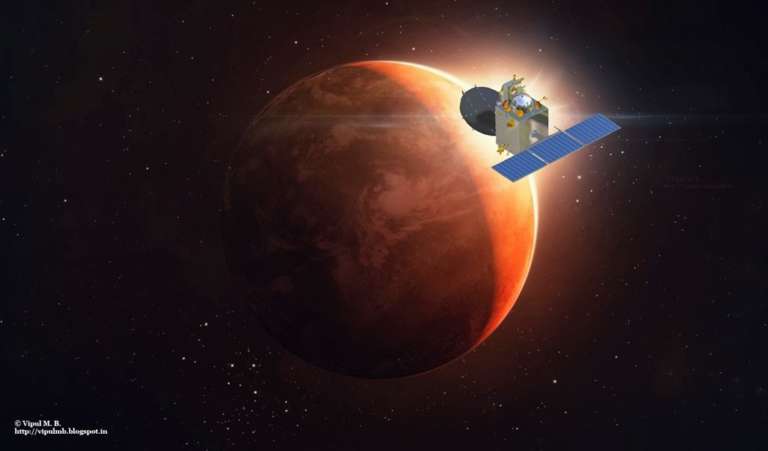Syed Maqbool Ahmed • Mar 02, 2016
MENCA brings divine wealth from Mars: First science results from the Mars Orbiter Mission
MENCA (Mars Exospheric Neutral Composition Analyser) is a quadrupole mass spectrometer onboard India's Mars Orbiter Mission, MOM. In Hindu mythology, Menaka was a nymph sent down to Earth from Indralok, the palace of the gods' god, Indra. Hence the first published results of MENCA from Mars is like a divine wealth, I must say. The results were published a few days ago in Geophysical Research Letters. Barring a few conference abstracts and a recent summary of MOM sub-systems in an Indian journal (PDF), this is the very first science result that the Indian MOM has churned out on the international forum. I am hoping for many more to come.
MENCA is based on the design of the CHACE instrument that was sent to the moon on ISRO's Chandrayaan-1 lunar mission. It was built at Space Physics Laboratory (almost by the same group as for CHACE) of ISRO's Vikram Sarabhai Space Center, in southern part of India. Basically, it is a neutral gas mass spectrometer covering 1-300 amu range with a capability of separating a single mass unit. The Mars Orbiter Mission was inserted into Martian orbit on September 24, 2014, with orbit parameters of 400 by 71,000 kilometers.
After the completion of one year of primary mission (September 2015), MOM was made to dip down to 260 kilometers from its normal periapsis altitude of 400 kilometers. While dipping down, MENCA had better chances of collecting data on neutral species data. The newly published paper reports that MENCA has successfully measured the altitudinal profiles of CO2, (N2+CO) and O. It gives me an immense satisfaction and PRIDE that MENCA has come up with flying colors.
What about the other instruments? Among the five payloads onboard MOM, both MCC and TIRS are imaging instruments. Big science is expected from the Methane Sensor for Mars, MSM, but as per a report appearing in January in The Financial Express, speaking at the Indian Science congress, Mr. S.K. Shivakumar (ex-director ISAC-ISRO) made a statement that MOM is yet to find methane on Mars. The Lyman Alpha Photometer (LAP) carries a great scientific value for its potential in estimating Martian atmospheric loss. But, the day belongs to MENCA.
The hard lessons learned in developing CHACE during Chandrayaan-I were all worth it. I feel I am on seventh cloud. I could say this not only for my correct prediction that MENCA was the most scientifically promising instrument on MOM, but also due to my personal experience of our attempts to publish the peak #18 (Water) data recorded by CHACE at the Moon in December 2008 with Chandrayaan-I. It was (then) rejected for publication on the grounds that it was likely "contamination". Later, in November 2009, the Moon Mineralogy Mapper (M3) instrument's remote sensing data of water from Chandrayaan-I was published by Science. So I would like to end by saying that MENCA's triumph on Mars means Lunar CHACE was correct.

Support our core enterprises
Your support powers our mission to explore worlds, find life, and defend Earth. You make all the difference when you make a gift. Give today!
Donate

 Explore Worlds
Explore Worlds Find Life
Find Life Defend Earth
Defend Earth


